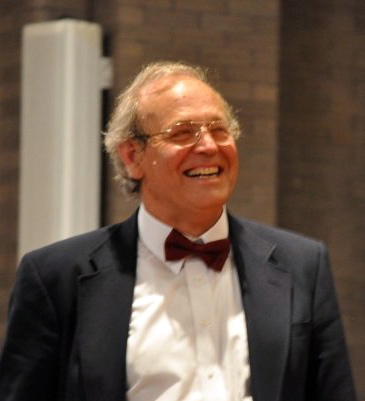Chicago Chorale spotlights a century of a cappella music

Although the designation “a cappella” has come to signify singing without instrumental accompaniment in common usage, the Italian phrase means literally, “of the chapel.”
The significance of that etymology is that 19th century musicologists who were unaware of the common earlier performance practice of doubling vocal lines with instruments in church music made the false assumption that a cappella music of the past had been performed without instrumentation.
As a result, not only did the phrase become synonymous with unaccompanied vocal music, but a new body of such music began to develop that was deliberately conceived as extending a tradition that never firmly existed.
The irony is that while a cappella music in the non-instrumental sense is often thought of as a Renaissance tradition, its actual roots come from the 19th century, although remains alive and well in the 21st century.
It is this genre that Bruce Tammen and the Chicago Chorale explored Sunday afternoon in a program called “A century of a cappella music” at the acoustically superb and architecturally significant Monastery of the Holy Cross on the Near Southwest side.
It was a short program, about 65 minutes of music performed without intermission. But because every piece and every set of pieces on the program were carefully polished gems, exquisitely performed and showcased, the experience was qualitative enough to make up for being less quantitative.
Most of the music was liturgically based, but there were some fascinating exceptions, including the Ave Maria from Poulenc’s opera Dialogues of the Carmelites, which beautifully spotlighted the high voices with its closely layered modern harmonies and rising angular melody.
The Pilgrims’ Chorus from Stephen Paulus’ The Three Hermits was another operatic excerpt, one of the few English texts, delivered with superb diction.
The Russian Orthodox tradition was represented with two contrasting settings of the Hail Mary. The first, from Rachmaninoff’s All-Night Vigil, opened with extraordinary tranquility dynamically building up to a thrilling climax that was often in need of more bottom support. The Ave Maria by Estonian composer Arvo Pärt was minimalist only in length, not style.
Another Estonian composer, Urmas Sisask, was spotlighted in his Benedicto, a rhythmically driven and innovative piece superbly rendered which at times, seemed to pull against its tranquil text.
The influence of the Orthodox liturgy could also be heard in the short Stravinsky Our Father setting that opened the program, which was uncharacteristically tonal and low-key, the music completely supporting the text.
The Kyrie from a contemporary setting of the All-Night Vigil by Finnish composer Einojuhani Rautavaara started with the low voices chromatically fanning out to the higher voices before all join in by the climax, but the lower voices were more tentative than the higher voices, which affected the balances.
Representing the German Lutheran choral tradition was the motet Fürwhar, er trug unsere Krankheit auf by Hugo Distler, a remarkable piece that makes use of Bach-like forms associated with his Passions and cantatas but with a rich and expansive post-Wagnerian harmonic vocabulary.
Despite the fact that the sopranos were somewhat overpowering during the fugue, this was the most memorable piece and performance of the afternoon.
Another Bach-related piece was Norwegian composer Knut Nystedt’s contemporary harmonization of Bach’s Komm, süßer Tod which requires each section to have its own conductor for its middle section, which elaborately decorates the cantus firmus of the first.
Two movements from Johann Nepomuk David’s Deutsche Messe, the Sanctus and the Agnus Dei, were less effective given that the enthusiastic sopranos became a bit strident, although by the end of the piece, more balance had been restored.
The men had their chance to shine in Franz Biebl’s Ave Maria, nicely rendered but revealed that those sections were a bit thin in ranks and timbre compared to the women.
The British choral tradition was represented by a tranquil performance of the Introit of Herbert Howell’s Requiem while the American choral tradition was spotlighted by the Robert Shaw/Alice Parker arrangement of Hark, I Hear the Harps Eternal and a joyful rendering of Randall Thompson’s Alleluia.
Posted in Performances




